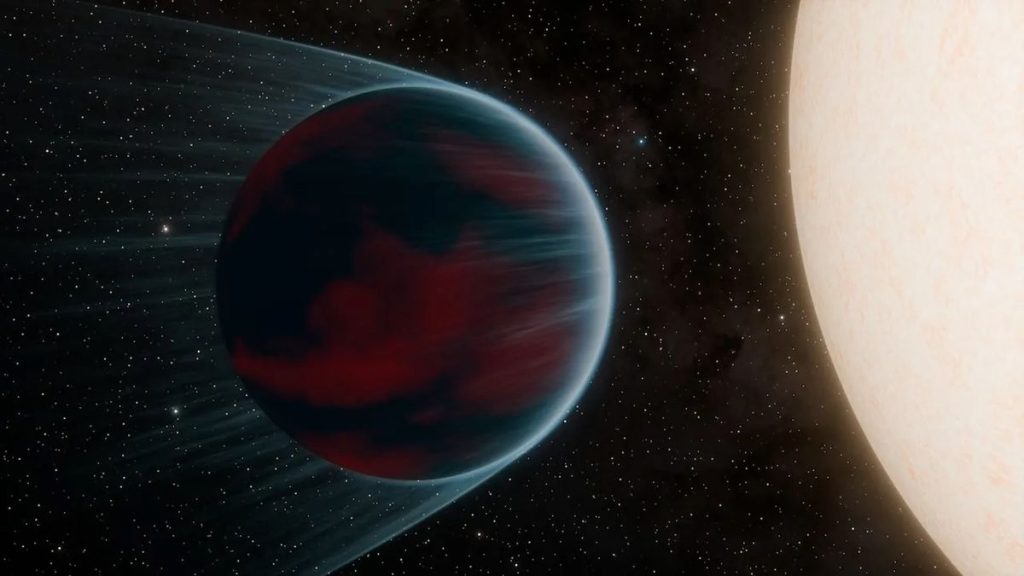
Discovery! Newfound exoplanet is 4th ‘hot Neptune’ ever found (Image Credit: Space.com)
A Neptune-sized planet closely orbiting its host star has just been discovered, making it only the fourth object of its kind ever identified.
Scientists detected the planet, designated TOI-3261 b, using NASA’s Transiting Exoplanet Survey Satellite (TESS). This Earth-orbiting spacecraft, which launched in 2018 and is still going strong, was specifically designed to search for exoplanets around the brightest dwarf stars with its wide-field cameras.
To confirm the discovery, the international research team conducted follow-up observations using ground-based telescopes in Australia, Chile, and South Africa.
The newly discovered planet belongs to a rare category known as the “hot Neptune desert,” so named because so few such planets exist that the term “evokes a deserted landscape,” NASA officials wrote in a statement. The first hot Neptune, LTT-9779 b, was discovered in 2020, followed by TOI-849 b and TOI-332 b.
Related: Why are there so few ‘hot Neptune’ exoplanets?
As the name suggests, these planets are roughly the size of Neptune but differ significantly in that they orbit extremely close to their host stars. For instance, TOI-3261 b completes its orbit in just 21 hours, making a year on the planet shorter than a single day on Earth.
Scientists have proposed numerous hypotheses to explain the scarcity of hot Neptunes. While our Milky Way galaxy is abundant with super-Earths and hot Jupiters, the question remains: Why are Neptunes so rare in such close orbits?
The scientists of the current study propose that part of the reason these types of exoplanets are so rare is because, at such close proximity to a star, it is more likely than not that a planet’s atmosphere would be stripped away by powerful gravitational forces and high-energy radiation.
In fact, the team calculated that TOI-3261 b is about twice as dense as Neptune, which suggests that the lighter parts of its atmosphere have already been stripped away.
The formation process of hot Neptunes remains unclear, but the team put computer models to the test, finding two possible scenarios. One posits that these planets may have initially been Jupiter-sized, gradually losing mass over time. Alternatively, they might have formed farther from their host star, where conditions allowed them to retain their atmospheres before migrating to their current close orbits.
More information will be gleaned through future observations. The team notes that both LTT-9779 b and TOI-849 b are scheduled for infrared studies with the James Webb Space Telescope, which will deepen our understanding of these planets’ atmospheres and may offer new insights into their formation, providing a glimpse into the mysteries of these mysterious, scorching-hot worlds.





